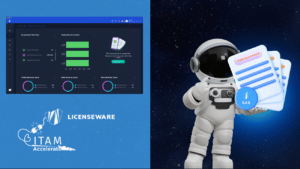Is Microsoft’s Licensing Model Fueling Security Risks?

Microsoft’s recent security issue, aptly dubbed “BadSuccessor”, highlights deeper concerns within the software giant’s approach—not just to security, but to licensing and market dominance as well. Specifically, the exploitation of default Managed Service Accounts (dMSA) to escalate privileges within Active Directory underscores a broader issue: how Microsoft’s licensing and product strategy can inadvertently introduce significant security risks.
Licensing and the Illusion of Choice

Microsoft has long relied on its licensing strategies to cement its market position, often prioritizing vendor lock-in over customer-centric security. This strategy is evident in the licensing of Active Directory and its accompanying tools, where complex terms and bundled licenses can inadvertently lead enterprises into adopting configurations that expose vulnerabilities by default.
For example, Microsoft’s licensing often encourages organizations to adopt broad, bundled toolsets with restrictive clauses that discourage the integration or substitution of more secure third-party tools. This significantly limits users’ flexibility and may indirectly force companies into accepting risky default settings provided by Microsoft.
Real-World Impact: The Case of BadSuccessor
The recently disclosed vulnerability, “BadSuccessor,” demonstrates how licensing constraints can amplify security issues. Enterprises locked into Microsoft ecosystems due to stringent licensing agreements find themselves overly reliant on default configurations provided by Microsoft. When these defaults are insecure—as with the dMSA escalation privilege issue—the consequences can be severe, ranging from unauthorized access to full network compromise.
Companies that might have otherwise chosen secure, interoperable alternatives find their hands tied by rigid licensing terms, making them vulnerable to such security lapses.
Regulatory Capture Over Innovation
Microsoft’s approach to maintaining market dominance heavily relies on regulatory strategies and aggressive licensing agreements, rather than fostering true innovation. Such practices stifle competition, impede interoperability, and indirectly contribute to heightened security vulnerabilities.
Consider how Microsoft structures its licensing agreements: complex, opaque, and often bundled in ways that hinder transparency and security. Organizations face significant hurdles if they attempt to introduce alternative, potentially more secure solutions—leaving them stuck with less-than-ideal defaults.
A Path Forward: Licensing Reforms to Boost Security
To genuinely address security concerns related to Microsoft’s dominance and licensing practices, several key reforms are necessary:
- Open APIs and Data Portability: Mandating open APIs and clear licensing terms would allow organizations greater freedom to integrate more secure, specialized tools into their IT ecosystems.
- Eliminate Vendor Lock-In: Regulators should discourage restrictive licensing clauses that inhibit competition and flexibility, thereby improving overall security through diverse tool adoption.
- Default Security Standards: Implementing strict liability for insecure defaults in licensing agreements could incentivize Microsoft and similar companies to prioritize security from the outset.
Investing in Alternatives
Promoting and funding open-source solutions can provide credible alternatives that challenge monopolistic licensing practices. As seen with successful public sector initiatives in countries like Germany, open-source software reduces dependency on restrictive licenses and fosters innovation and transparency.
Ultimately, Microsoft’s security challenges are closely intertwined with its licensing strategies. Reforming licensing practices and investing in open, secure alternatives can provide businesses with the flexibility they need to secure their infrastructure effectively, reducing reliance on precarious defaults and increasing overall cybersecurity resilience.










